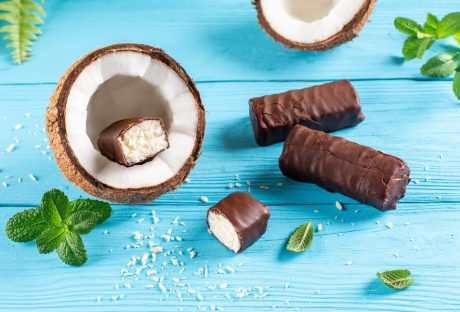Are you that lucky cocktail party host this weekend among your friends? If you are, then you must be wondering what exception you can make this time that people will love.
We know that you can manage the ‘cocktail’ part. So, we have gathered seven delicious & exotic snacks for your next cocktail party that will win the hearts of your guests and makes you the star host of the month!
However, these snack ideas are so overwhelmingly good that people may request you to make them again and again. Here, you will find quick and easy dishes to prepare, although you may need to visit the supermarket to get the ingredients.
Without further ado, let’s get started with the recipes so that you can pick which snacks you want to prepare and make the list of ingredients.
1. Salmon Tartines for Fish Lovers
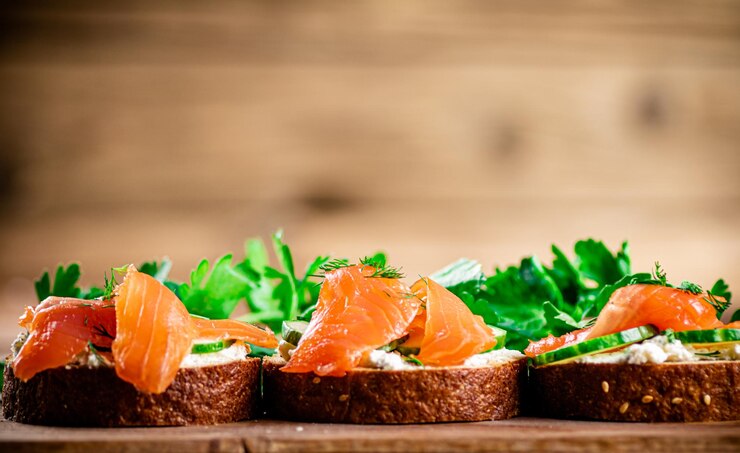
Recipes with Salmon and avocado are always a delicacy; when you prepare it with wasabi, it will deliver a heavenly feel with your fast bite. And guess what, you need only 15 minutes to make it.
Ingredients:
To prepare this dish, you have to gather the following ingredients:
- Puff pastry,
- Sashimi-quality salmon,
- Mirin,
- One avocado,
- Low-sodium soy sauce
- Ginger,
- Lime juice,
- Caster sugar,
- Rice vinegar, and
- Wasabi paste.
Cooking Method:
To prepare the recipe, follow the steps below:
- Preheat the oven to 200 degree Celsius and cut the pastry according to your preferred shape; place them on a lined tray over the baking paper and bake for 10-12 minutes till golden in color and allow them to cool down. Your tartine base is ready.
- While baking, process the avocado with wasabi. To do that, take a small pan and dissolve sugar in water over low heat. When it cools down, take an avocado, wasabi, lime, and sugar in a blender, add salt or any other seasoning if you want, and set aside.
- Prepare a dressing by mixing mirin, vinegar, soy sauce, and ginger in a small pot.
- After you have prepared everything, take a pastry base and place avocado, salmon, and cress. Serve with a drizzle of dressing.
2. Elk Jerky Cheeseboard for Slow Eaters
How about serving an Elk Jerky cheeseboard at your cocktail party? This cheeseboard is a great addition to the food you can serve because it not only has a posh vibe but also serves a unique version of your regular charcuterie board due to the gamey elk.
Elk goes well with many reds including Cabernet Sauvignon, which can complement this strong-flavored jerky with its earthy notes. You can also pair it with lighter-style cocktails made from scotch, gin, or tequila, as they go well with these types of dried meat.
You can add a variety of cheese to such a board, including emmental, brie, gouda, and blue cheese.
3. Carrot Muffin for Sweet Tooths
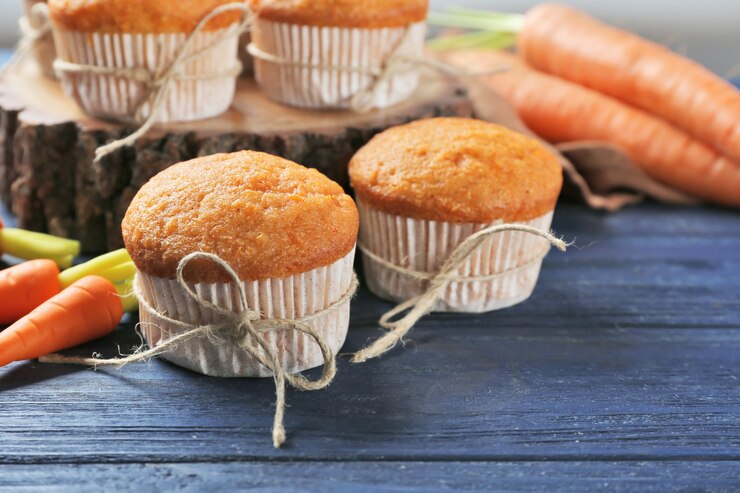
If you want to prepare a carrot muffin for your cocktail party ahead of time and you love baking, then this dish is a must for you to try.
Ingredients:
This dish is easy to prepare and only needs eight ingredients.
They are:
- Yogurt (Greek style),
- Ready mixture for making carrot cake,
- Carrots,
- Pecans,
- Eggs,
- Aperol,
- Pure cane sugar, and
- Vegetable oil.
Cooking Method:
To prepare the recipe, follow the steps below:
- First, you will make a labneh. Take a bowl and set a fine sieve over it. Put the yogurt inside, wrap it with the sieve, and hang it over the bowl in the refrigerator overnight.
- Preheat the oven to make muffins at 170 degrees Celsius.
- Grate the carrot coarsely and mix it with the cake baking mix. You can add pecans to the mix.
- Take the muffin glasses, and bake them for at least 35 minutes. To make sure they are evenly baked, insert a skewer in the center, and if it comes out clean, your muffins are ready.
- If you want to soak the muffins with Aperol syrup, place water, sugar, and Aperol on a small pan and keep stirring until the sugar is dissolved over medium heat.
- Place the muffins in a line and pour syrup over them. Let the muffins soak in the syrup for 5 minutes.
- Add the icing mix with labneh to make frost, and use your creative ideas to décor the muffins.
4. Four Crispy Buffalo Wings for Savory Hunters
Nothing can beat the taste of chicken wings. And the crowd will devour it within a minute if you can make it extra crispy outside and juicy inside. Here’s the recipe:
Ingredients:
To make Buffalo wings, you’ll need the following:
- Chicken wings (defrost if frozen),
- Baking powder,
- Salt,
- Butter,
- Franks hot sauce,
- Sugar.
Cooking Method:
To prepare the recipe, follow the steps below:
- Tap the wings with tissue paper to absorb the extra water after washing. Toss the wings with baking powder and salt; it will absorb the extra moisture from the chicken’s skin, making it crispier.
- We are not using hot oil in this recipe as we are going to bake the wings. The science behind baking the wings and making them crispy is to start baking using low temp at first and increasing the temp after a few minutes. Set the tray on the lower shelf of the oven at 250F/120C.
- Low temperature will melt the fat first, and high temperature will make the skin super crispy when you place the wings on a higher oven shelf at 425F/220C.
5. Sausage Rolls for Meat lovers
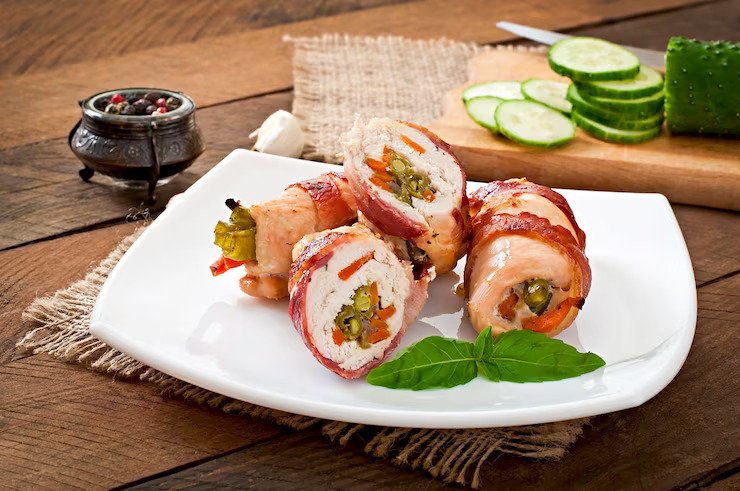
You know that your friends love meat. But you don’t want to worry about arranging a bbq in the backyard. So, prepare these bite-size sausage rolls to calm the meat cravings of your guests.
Ingredients:
To make sausage rolls, you’ll need:
- Pork,
- Onion & Garlic,
- Breadcrumbs,
- Puff Pastry,
- Bacon,
- Fennel Seeds,
- Salt & Pepper.
Cooking Methods:
Follow the easy-peasy steps below to cook off sausage rolls:
- Take a pan and cook bacon, onion, garlic, and celery,
- Mix with the pork,
- Place the puff pastry, put the mix on it, roll it over, and cut it into small portions.
- Place them on a baking tray and brush with egg.
- Bake them for 30 to 40 minutes until golden brown.
This snack serves its best when you are keeping the option of exciting games at your party. Whether it’s a two-player board game or a multiplayer one, people can have more fun when they have something delicious to eat.
6. Coconut Shrimp for Peaky Eaters
Every party has those guests who will not eat anything that’s too oily or too sweet. To tackle those peaky eaters, you can cook coconut shrimp, which will go well with whiskey cocktails.
If you are not hiring any bartenders and decided to become one for the day, check out these whiskey cocktail recipes for home bartenders!
Ingredients:
You will need the following items for this quick bite.
- Jumbo Shrimp,
- Flour,
- Shredded coconut,
- Beaten egg,
- Pepper,
- Pranko breadcrumbs,
- Garlic powder,
- Oil and salt to taste.
Cooking Method:
Follow the steps below to have the best shrimp dish of your life.
- Wash the shrimp and season them in a bowl with pepper and salt,
- Take two flat dishes. Mix flour and garlic powder in one of them; in the other, mix coconut and breadcrumbs.
- Take one shrimp and dredge it in the flour mixture; after that, dip it in the beaten egg and dredge again in the coconut mix. Follow the steps for each shrimp.
- Refrigerate for an hour (or overnight if you want to prepare the night before and serve hot the next day).
- Deep fry in a pan full of oil till golden brown color and season with salt and pepper after the whole batch is done. Place them on a baking sheet with a cooling rack so that they can absorb the dripping oil.
- Serve it with sauce or mango salsa.
7. Salsa for Lazy Hosts
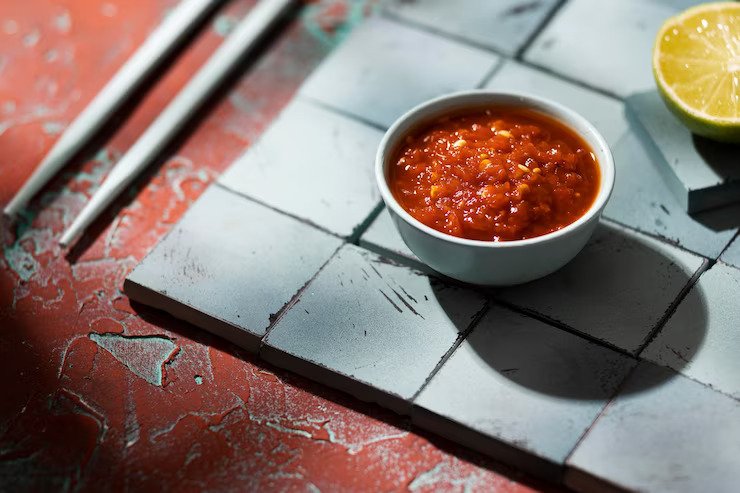
When it comes to cocktail parties, you need easy, quick recipes that will take less time to prepare so that you don’t get stuck in the kitchen while others are enjoying the evening, and this salsa will take only two minutes.
Ingredients:
Here goes the items you need to get together:
- Crushed tomato,
- Coriander leaves,
- Green chiles,
- Garlic,
- Lime,
- Jalapeno,
- Cumin, and
- Sugar.
Serve with tacos, fajitas, burritos, nachos, or quesadillas. You can buy them at any store.
Cooking Method:
All you need to do is blend all the ingredients mentioned above. However, make sure to use good quality canned tomatoes, if not fresh ones. You need to blend for a few seconds and see the consistency. Keep blending if you like it smoother.
But don’t blend too much if you like it chunky.
Conclusion:
With this list of seven delicious & exotic snacks for your next cocktail party, you will be able to welcome your guests with warm hearts and warm food on the counter.
Even though cocktails are the main stars of your party, these bite-size, easy-to-prepare snacks will make your evening even better alongside the drinks. Prepare the snacks while ensuring the recipes have variety, such as spicy, sweet, savory, vegetarian, and non-veg options.
Read Also:














